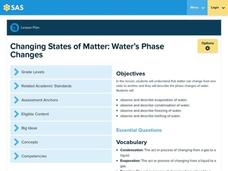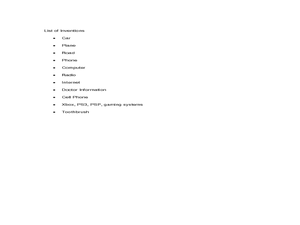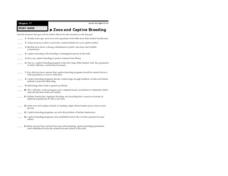Curated OER
Plinian Eruptions
In this Plinian eruptions instructional activity, students read about the types of volcanic eruptions and about Gaius Plinius Secundus who the Plinian eruption was named after. Students answer four critical thinking questions about...
Curated OER
The Ties that Bind
In this bonding worksheet, students read about the types of bonds that hold compounds together. They are given fifteen common materials and they identify the types of bonds that hold each together.
Curated OER
The Dalton Model
In this Dalton worksheet, students read about John Dalton and his contributions to understanding the atom. Students are given sample data for Dalton's experiments and they answer questions about the data in his experiments.
Curated OER
Average Atomic Mass
In this average atomic mass worksheet, high schoolers read about how the protons and neutrons make up the atomic mass of an element. They find the average atomic mass given four problems.
Pennsylvania Department of Education
Changing States of Matter: Water’s Phase Changes
Third graders observe the properties of water and in its different states. For this states of matter lesson, 3rd graders view a video, read The Magic School Bus at the Waterworks and experiment with freezing, melting and boiling water to...
Curated OER
They're Tilling that Field Behind the Mall
Unfortunately, the article for which this resource was written is not available. You can, however, find another current document on agriculture and urban development for your class to read together, and then still follow the suggested...
Curated OER
Science NetLinks: Burrowing Owls
Students investigate the example of the burrowing owl to illustrate how human activities can control the fate of species. The research is focused on the ecosystem and examining the different species within it.
Curated OER
Star Party- Closing Lesson
Students study the stars and galaxies. In this universe lesson students complete their unit by participating in an evening bonfire to share what they learned.
Curated OER
Science Inventions
Third graders explore the world of inventions by describing their impact on their own lives. In this technology instructional activity, 3rd graders practice writing descriptive paragraphs about different inventions that they find...
Curated OER
Reading Maps of the East Pacific Rise
Students make qualitative and quantitative observations and use various maps to investigate the features of the East Pacific Rise The study actual bathymetric maps of the EPR region. They identify key features of the ridge and explore...
Curated OER
Reading - Glaciers
In this online interactive glaciers worksheet, students respond to 10 fill in the blank and multiple choice questions regarding the information included in the provided paragraphs.
Curated OER
Chuck Close Up Close
Students practice the art of storytelling using realistic art. They pick one illustration of a character in the book and create a story about the possible life he lived. The important details that are needed is the name, occupation,...
Curated OER
Monster Plants Storia Teaching Guide
Who wouldn't want to read a book about monster plants? Get those kids into informational texts with an engaging topic, like meat eating plants! You'll use the teaching guide to provide structured practice as your class reads to...
Curated OER
Density and Convection Currents
Students listen as the teacher explains convection currents in the ocean. They experiment with finding a smoking match in the classroom with their eyes closed. Students discuss what might effect their ability to pinpoint the smoke...
Curated OER
The Tobacco Time Bomb: What's In A Cigarette?
In this enlightening and disturbing health lesson, students read and discuss information on smoking and closely-look at the ingredients in a cigarette. You will be amazed at the list of ingredients that are found in cigarettes. This...
Curated OER
Math Club #16: Knot Theory
In this math club #16: knot theory worksheet, 9th graders read about knot theory, analyze diagrams of knots, make knots to match the diagrams and answer 6 questions about advanced knots.
Curated OER
The Human Mind
Young scholars read and discuss twin studies to explore the debate of nature vs. nurture. They create a list of characteristics and then look for evidence of whether it is primarily a genetic or environmental characteristic. All of the...
Curated OER
Healing Fallen Warriors
Students read ancient Greek texts to explore evidence for healing wounds and compare ancient healing practices to those of modern times.
Curated OER
The Endocrine System
In this endocrine system worksheet, students study and read in a room with the thermostat listening for the furnace sound. They place a thermometer beside the thermostat and observe its reading. Students also record the time and...
Curated OER
The Ancient Cycads
For this cycads worksheet, students will read a short essay on the cycad tree, including it's reproductive strategies and it's general characteristics. Then students will complete 2 short answer questions based on what they read.
Curated OER
Zoos and Captive Breeding
After reading pages 470-472 of an unspecified textbook, students compare statements about zoos and captive breeding to information presented in text for statements of truth. Students change statements that are false so that the...
Curated OER
Mollusks and Segmented Worms
In this mollusks and segmented worms worksheet, students read information about these two groups of organisms and compare and contrast their general characteristics. This worksheet has 2 short answer questions.
Curated OER
Epic Improvisation
Really? Rapping The Odyssey? Really. A discussion of the oral tradition of story telling and its links to Epic poetry sets the stage for a series of activities that encourage improvisation to integrate music into other classrooms....
Curated OER
Energy Resources
In this energy resources worksheet, students read about the greenhouse effect and global warming. Then they explain why scientists are so concerned with greenhouse gases. Students also describe how global warming affects people worldwide.

























